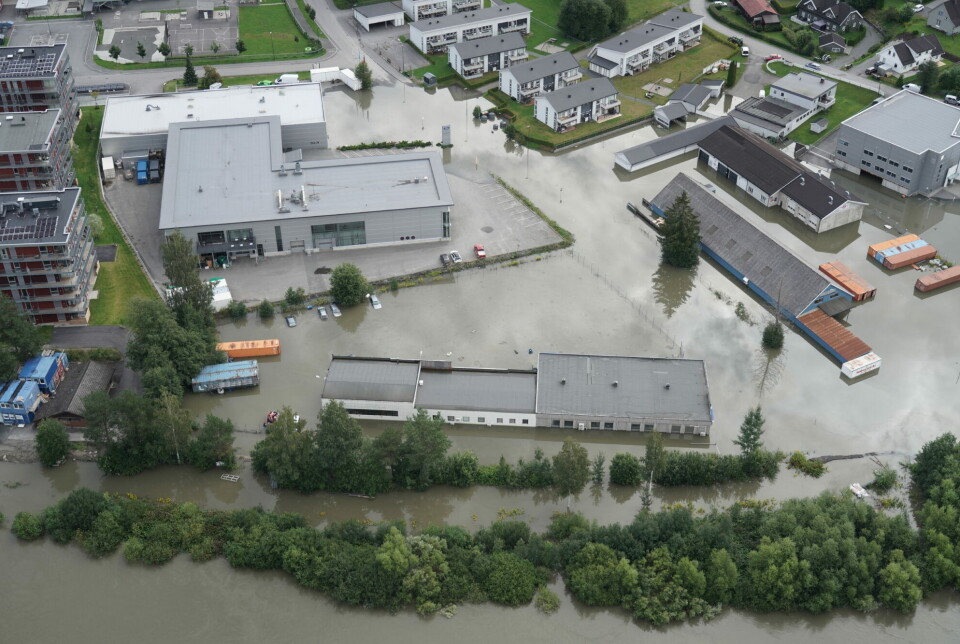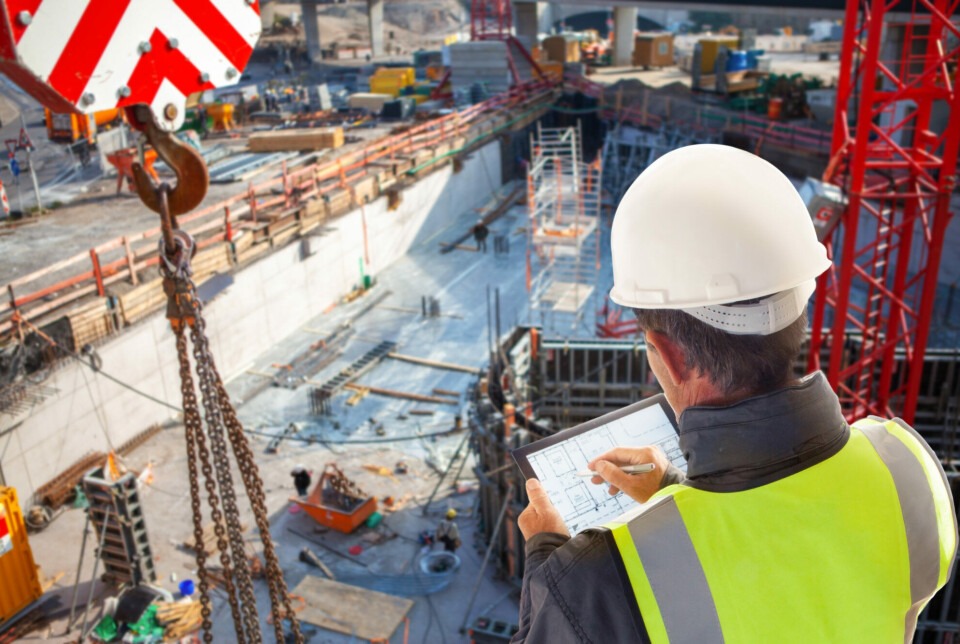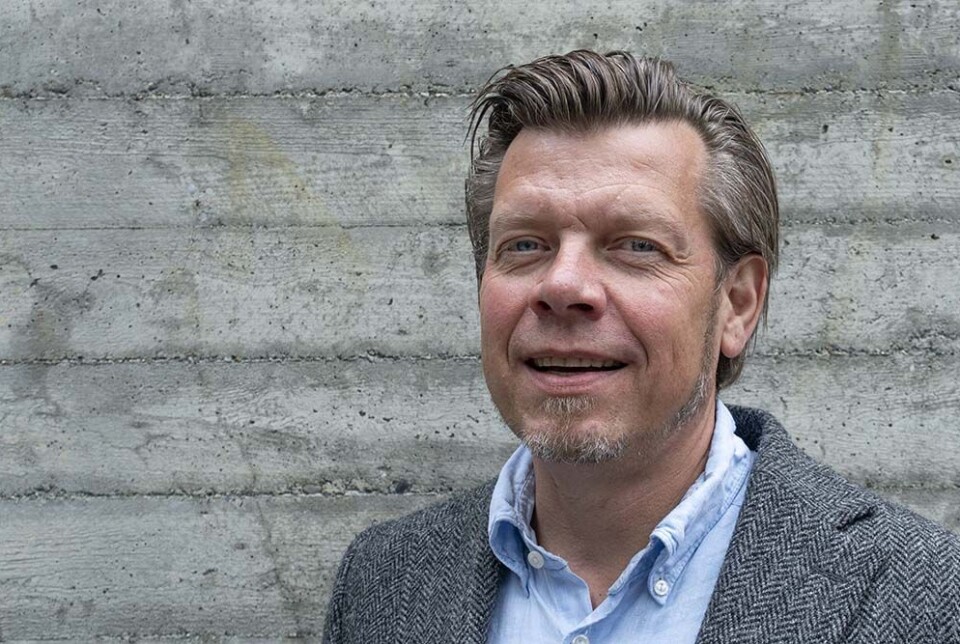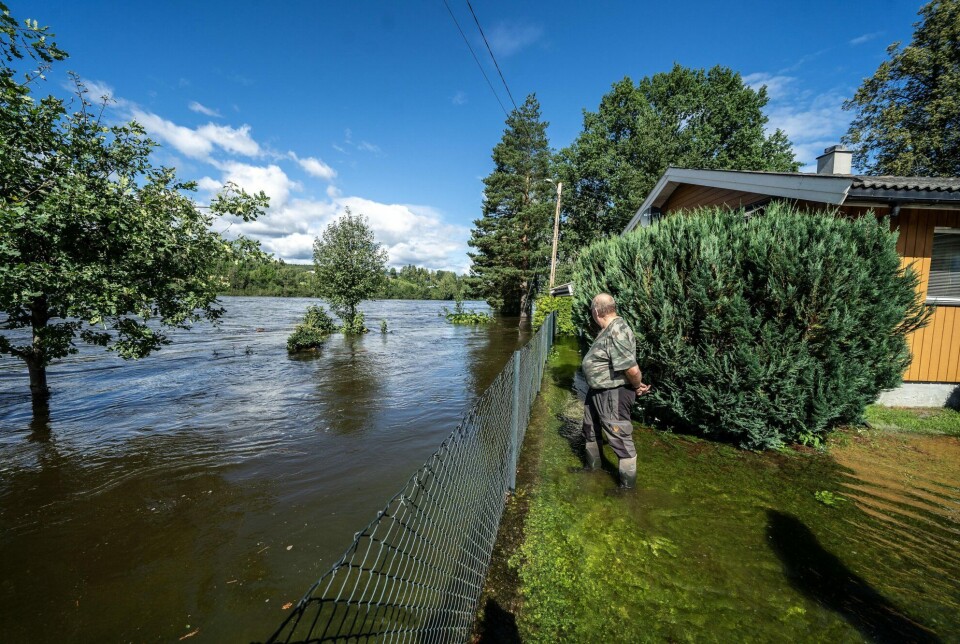THIS CONTENT IS BROUGHT TO YOU BY NTNU Norwegian University of Science and Technology - read more

Torrential rains put engineers under ethical pressure
A recent storm in Norway called Hans has accelerated the debate about how we should build and where we can live.
Silo mentality between different disciplines. Laws and regulations that are not adapted to the new climate reality. Maps of flood and landslide risk that are not coordinated. Important data that is stored in scattered locations, and damage data blocked from view.
All of these challenges exert increased ethical pressure on engineers and other key people on Norwegian construction sites. These pressures are causing many to lose sleep.
This was revealed in an analysis of results from SFI Klima 2050. It is an interdisciplinary project designed to reduce the societal risk associated with climate change.
The analysis particularly focuses on the effects of extreme rainfall, which is considered the biggest threat to the built environment in Norway.
Ideals vs. practical approach
So far, few have researched the increased ethical challenges that come with wild weather. Jardar Lohne, a researcher at NTNU’s Department of Civil and Environmental Engineering, is the first author of this study.
He says that much of the existing literature surrounding climate change is about dimensioning, tolerances, and strength calculations.
Some studies are intended for policy making and often contain more visions and ideals than a practical approach to pressing challenges.
A lot of sleepless nights
“When we started studying this issue, we found that individual engineers are often forgotten. They’re the ones on the scene outside at construction sites who are overlooked. And yet they are under pressure from many sides,” Lohne says.

The engineers need to deliver on time, ensure workers’ health, environment and safety, keep costs down, and quality up. A lot of people get mad at them.
“People don’t want floodways crossing their property, and get angry at the decision makers. The written reports make little mention of sleepless nights, but I can guarantee you that there are a lot of them,” he says.
When is something safe enough?
The engineers who design and build things can of course never guarantee 100 per cent safety.
“That’s the nature of practical engineering,” Lohne says.

Because when is something safe enough? When are houses strong enough to withstand the weight of more precipitation that falls as snow high up in the mountains? How much do we need to snow- and flood-proof buildings?
“All this will be terribly expensive. Who’s going to pay for it? And not least: Who is to blame if something goes wrong? These are all ethical questions,” Lohne says.
Specific features make industry vulnerable
Climate change provides a lot of possibility for unethical actions, according to Lohne. Regulations, controls, and best practices are few and far between. Assessing how actors have operated is also difficult after the fact.
The analysis points to specific features of the construction industry that make it particularly vulnerable:
- The industry is fragmented
- Work on large contracts is often project-based
- No two projects are the same
- Project contracts are often split up into many subcontractors
- Work outdoors goes on year round, in different physical environments and different climates
- Practical decisions are made out on the construction sites and far from head offices
- Accountability often lies with the same people who are responsible for the climate-adapted work
Silos create knowledge gaps
Silo mentality and lack of transparency between disciplines is another challenge. They prevent the transfer of expertise, and individual actors are left with incomplete knowledge.
“Some actors also have a lot to gain from things remaining the way they are,” Lohne says.
When industry and authorities have to adapt to a wilder and wetter daily life, old habits and patterns of behaviour need to be broken. Overcoming silo mentality and replacing it with a more collaborative and holistic approach is critical. And it should happen as soon as possible.
Should have foreseen Hans
“Researchers have already predicted extreme weather. The knowledge exists. The problem is that it should be used more proactively to prevent crises. Instead, we’re seeing that climate measures are implemented in reaction to damage that has already occurred – even though it’s much cheaper to prevent damage than to repair it,” Lohne says.
He believes we will end up where we are now over and over again if we don’t look at this issue more holistically and treat the built environment as a system.
“We should be including the researchers in the planning and not just in the rebuilding or for investigations,” he says.
Ineffective maps
Mapping information is also a challenge, according to the analysis. Norway has good geotechnical maps of areas that are prone to landslides, and good hydrological maps of places with potential flood risk.
Although these natural damages are closely related, the maps are not always easy to sync up.
A project manager’s judgments about the location of a building, or whether or not to build, can also dramatically affect the value of a property.
Another challenge is that laws and regulations often lag behind evolving developments. Climate 2050 researchers have pointed out that technical construction regulations still do not reflect the challenges we now face.
Old practices do not work
So the pressure on the engineer standing down in the construction pit, on the hydrologist by the flood-prone river, and on the geotechnician on the steep slope continues to grow.
“They don’t have the benefit of big picture knowledge, and they don’t have guidelines for how to respond when events occurs,” Lohne says.
Past experiential knowledge that people have always been able to rely on no longer applies. Established practice don’t work when hundred-year floods are raging.
“These questions require serious reflection and much more attention than they’re getting today – to say the least. Our study shows the arguments for that,” he says.
Concrete challenges must be addressed
Lohne believes the smart way to bring about change is to start with the specific challenges facing the people with boots on the ground – like the engineer, the hydrologist, and the geotechnician.
We have to put tools in place that work from the bottom up – and not just create new, top-down directives.
“If I were to give a little poke: I notice that little attention is given to what individual engineers and specialists struggle with. A little too often I observe that their issues are well hidden in public investigations,” he says.
Bright, fresh – and conservative?
Lohne is particularly concerned about the young engineers. The analysis recommends more ethics in education, which can help build awareness.
Many new graduates are quickly given a lot of responsibility that require big decisions.
“I think the young graduates are tough and smart. They are assigned to demanding jobs. Many people manage it really well. But I also observe that they quickly end up in industry-oriented ways of thinking that some might call conservative. They may not have been given enough tools from us to fully understand the role their chosen profession plays in society,” Lohne says.
“We’re on our way into unknown terrain, and educational institutions need to take it seriously.”
Biggest rainfall in 100 years
The research analysis was published at the end of April 2023. Four months later, Storm Hans released a rainfall the likes of which Norway had not seen in 100 years.

“We don’t quite know how as a society we should respond to these challenges. It will be interesting to see how long it takes us to come up with good answers. And whether we even manage to do it at all,” Lohne says.
Reference:
Lohne et al. Ethics of Climate Change Adaptation—The Case of Torrential Rains in Norway, Buildings, 2023. DOI: 10.3390/buildings13051111
More content from NTNU:
-
Politics on Facebook: Populist parties choose divisive issues on purpose
-
Social media is connected to cyberbullying – but not how we thought
-
Forskere ved NTNU får nesten 24 millioner av EU for å lage nye strømomformere
-
This helps the youngest children enjoy school more
-
Can we tap the ocean’s power to capture carbon?
-
Researchers have uncovered major problems in Norway's salmon industry





































